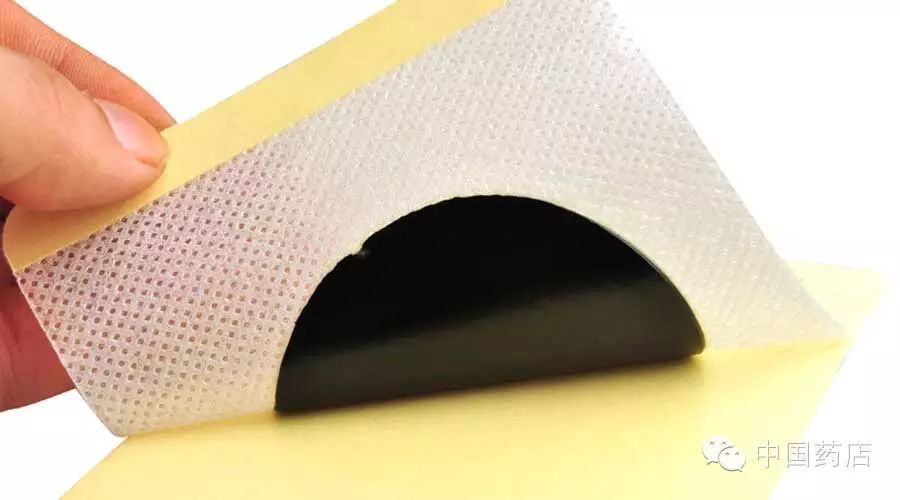

Author: Pingyuan
The plasters we commonly refer to are a type of traditional Chinese medicine (TCM) dosage form, classified as hard plasters within the category of ointments. They are made by dissolving or mixing medicinal substances in an appropriate matrix, which is then spread onto a backing material for topical application, resembling a solid external dosage form.
Plasters utilize the principle of meridian entry of TCM, leveraging the characteristics of TCM formulas that work synergistically. They consist of multiple medicinal ingredients to achieve effective results. Since plasters are applied thinly to the skin, they often contain herbs with strong aromas and properties, which guide the action of the other herbs directly to the affected area. The medicinal substances penetrate the skin to reach the subcutaneous tissue, creating a relative concentration advantage at the site, thus exerting a strong pharmacological effect. Additionally, after penetrating the skin and mucous membranes, the substances can enter the systemic circulation through blood vessels or lymphatics, potentially producing systemic effects.
Classification of Plasters
Classified based on the composition of the matrix
|
Name |
Matrix |
Description |
|
Black Plaster |
Plant oil and lead oxide |
Made from plant oil and lead oxide refined at high temperatures to a black color. It is the most commonly used plaster in clinical practice. |
|
White Plaster |
Plant oil and lead powder |
Made by heating plant oil and allowing it to cool to around 100°C, then gradually adding lead powder, which combines with the plant oil. The oxidation reaction of lead powder is less vigorous than that of lead oxide, resulting in a light yellow product, with some unreacted lead powder mixed in, hence the final product is generally yellowish-white, referred to as “White Plaster.” |
|
Oily Plaster |
Plant oil or oil-containing medicinal materials |
Made from plant oil or oil-containing medicinal materials mixed with other herbs, referred to as “Oily Plaster.” For example, “Dan Zhu Soft Ointment.” |
|
Green Plaster |
Plant oil and copper compounds |
Made from plant oil and copper compounds, resulting in a green color, hence called “Green Plaster.” |
|
Rosin Plaster |
Rosin and fatty substances |
This is a type of lead-free plaster made from rosin and fatty substances as the matrix, combined with medicinal ingredients to form a hard plaster. It can be made using methods similar to lead plasters or by grinding. |
|
Rubber Plaster |
Rubber |
Also known as “Rubber Ointment,” this is a type of external preparation made from rubber as the matrix, which may or may not contain medicinal ingredients. |
|
Bab Paste |
Hydrophilic polymer |
This is made from hydrophilic polymers as the framework material, adding fillers, thickeners, moisturizers, crosslinking agents, and crosslinking regulators, combined with TCM extracts, then coated, cut, and packaged into modern external plasters. |
|
Transdermal Patch |
Polymer and controlled-release materials |
Made from polymers and controlled-release materials, these new formulations allow drugs to penetrate the skin for local and systemic therapeutic effects. |
Classified based on treatment scope
|
Treatment Scope |
Examples |
|
Local |
Plasters like Tianhe Bone Pain Patch targeting local areas such as joints |
|
Systemic |
“Asthma Plaster,” “Headache Plaster,” etc., which act on the entire body through acupoint application. |
Classified based on treatment categories
|
Category |
Indications |
|
Blood Activating and Stasis Resolving |
Trauma and injuries |
|
Clearing Heat and Detoxifying, Promoting Tissue Regeneration |
Ulcers, carbuncles, and other conditions |
|
Yang Toxicity Internal Dissipation |
Yang toxicity, characterized by redness, swelling, heat, and pain |
|
Bone Healing and Tendon Repair |
Bone injuries, where the bone position is corrected, and swelling has subsided, but there is still residual blood stasis |
|
Warming Meridians and Dispelling Cold |
Pain in the neck, shoulders, waist, and legs, as well as chronic injuries |
Common Types of Plasters in Pharmacies
Although the types of plasters commonly found in pharmacies are fewer than those in TCM clinical practice, the basic principles of differentiation must still be adhered to.
|
Condition |
Treatment Method |
Representative Formulations |
|
Osteoarthritis, lumbar muscle strain, wind-cold-damp bi syndrome, trauma, etc. |
Dispelling cold and wind, relaxing muscles and activating blood, relieving pain |
Tianhe Bone Pain Patch, Tianhe Wind Dispelling Ointment, Injury Dampness Pain Relief Ointment, Capsicum Plaster |
|
Hard lumps that do not dissipate, redness, swelling, and pain due to heat toxicity, or chronic non-healing wounds |
Detoxifying and reducing swelling, promoting tissue regeneration |
Detoxifying Ointment |
Precautions for Recommended Medications
Surveys indicate that 60% of plasters are sold through pharmacy channels, making the pharmacist’s role crucial for the correct use of plasters.
First, for patients with severe trauma, it is advisable to recommend seeking medical attention to avoid delaying treatment for fractures or serious conditions;
Second, it is important to remind certain groups of people who should not use plasters: for those who have sustained muscle contusions or joint/ligament strains during exercise or labor, do not apply plasters immediately to the injured area, as doing so will not achieve the desired effect of reducing swelling and relieving pain; individuals with skin lesions should not apply plasters directly to the damaged area (except for detoxifying ointments). Since plasters are external medications that act systemically through the skin, they must be used on intact skin. Applying plasters directly to broken skin can irritate the wound and, combined with lack of air permeability, may lead to purulent infections. Some plasters contain toxic substances such as raw Chuan Wu (Chuan Wu), raw Cao Wu (Cao Wu), which can cause poisoning if absorbed through damaged skin; any plasters containing blood-activating ingredients such as musk, frankincense, safflower, myrrh, and peach kernel should be avoided by pregnant women; if a rash, blistering, or severe itching occurs after applying a plaster, it indicates an allergy to that plaster, and application should be stopped immediately, followed by anti-allergic treatment; plasters are not suitable for early-stage traumatic fractures or severe skin diseases.
Third, pharmacists should provide detailed instructions on the correct application of plasters. Experts recommend that before applying a plaster, the affected area or acupoint should be cleaned with a hot towel or ginger slice, and allowed to dry before application. Avoid applying plasters in areas with excessive hair, as this may prevent adhesion or cause pain when removed. After application, a hot towel or hot water bag can be used to warm the area to promote absorption and enhance therapeutic effects. Additionally, the plaster should not be left on for more than 24 hours, and there should be at least a 12-hour interval between applications.

If you like it, please give a thumbs up! ↙

